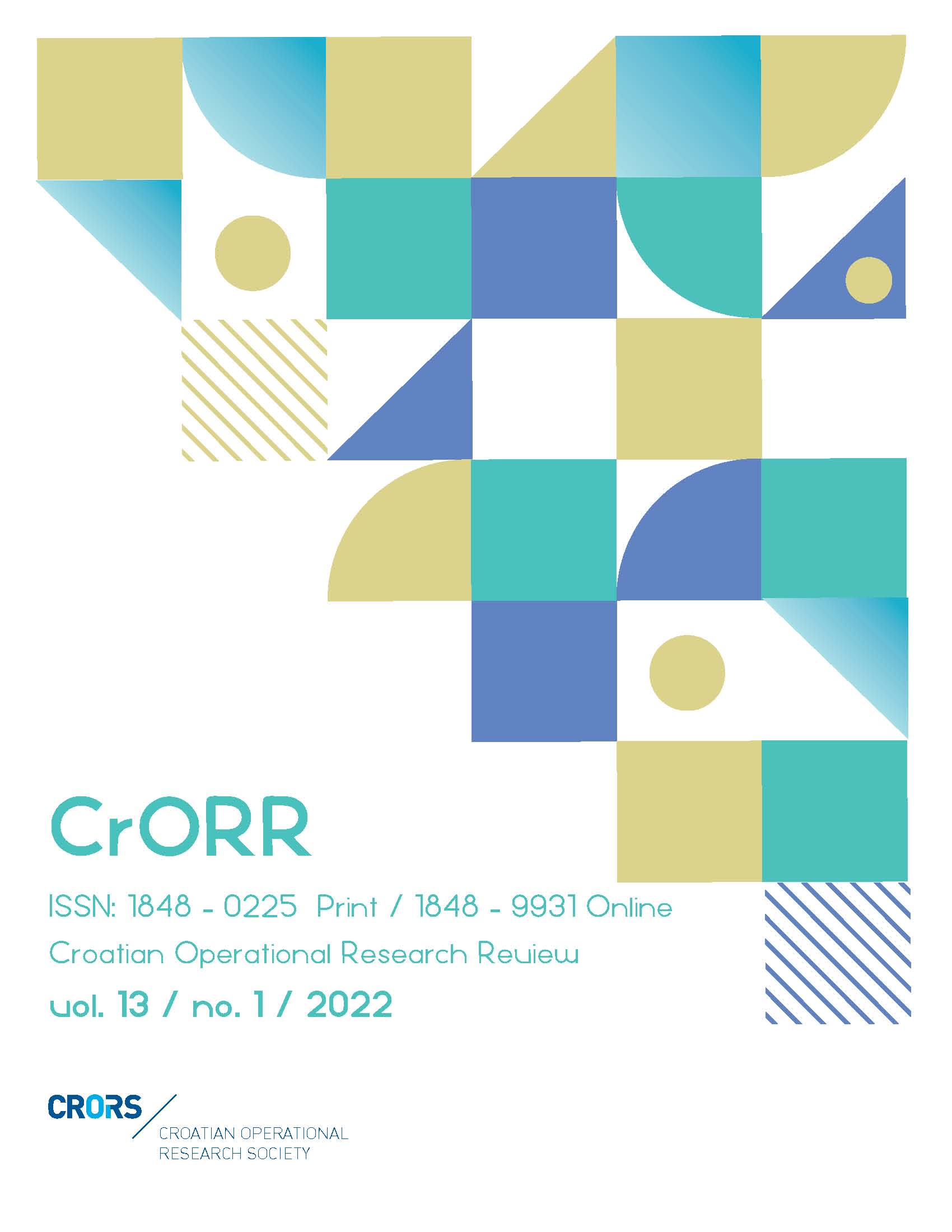Delivery pattern planning in retailing with transport and warehouse workload balancing
Abstract
Goods from warehouses must be scheduled in advance, prepared, routed, and delivered to shops. At least three systems directly interact within such a process: warehouse workforce scheduling, delivery scheduling, and routing system. Ideally, the whole problem with the preceding inventory management (restocking) would be solved in one optimization pass. In order to make the problem simpler, we first decompose the total problem by isolating the delivery scheduling. Then we connect the optimization model to the rest of the system by workload balancing goal that is a surrogate of coordination and criterion for the system robustness. This paper presents the practical application of top-down discrete optimization that streamlines operations and enables better reactivity to changes in circumstances. We search for repetitive weekly delivery patterns that balance the daily warehouse and transportation utilization in the absence of capacity constraints. Delivery patterns are optimized for the quality criteria regarding specific store-warehouse pair types, with a special focus on fresh food delivery that aims at reducing inventory write-offs due to aging. The previous setup included semi-manual scheduling based on templates, historical prototypes, and domain knowledge. We have found that the system augmented with the new automated delivery scheduling system brings an improvement of 3% in the performance measure as well as speed in adjusting to the changes, such was the case with changes in policies during COVID-19 lockdowns.
Downloads
Published
Issue
Section
License
- Authors retain copyright and grant the journal right of first publication with the work simultaneously licensed under a Creative Commons Attribution License that allows others to share the work with an acknowledgement of the work's authorship and initial publication in this journal
- Authors are able to enter into separate, additional contractual arrangements for the non-exclusive distribution of the journal's published version of the work (e.g., post it to an institutional repository or publish it in a book), with an acknowledgement of its initial publication in this journal.
- Authors are permitted and encouraged to post their work online (e.g., in institutional repositories or on their website) prior to and during the submission process, as it can lead to productive exchanges, as well as earlier and greater citation of published work (See The Effect of Open Access).


